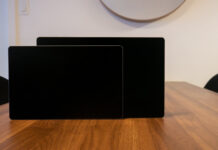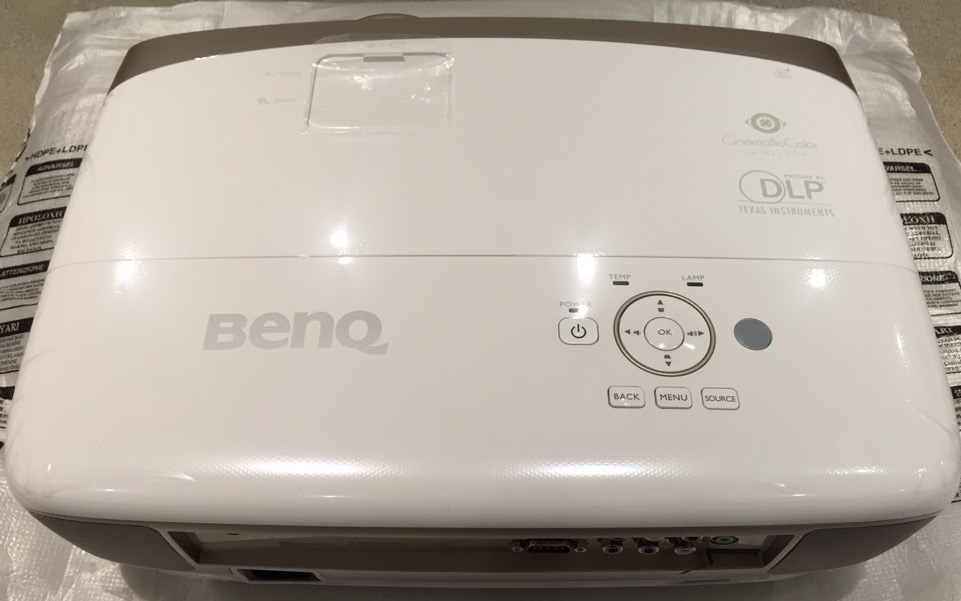 The BenQ HT3050 home theatre projector checks a lot of boxes as a home theatre projector. It’s not overly large (38cm x 12cm x 27 cm), it weighs 7.93lbs, and it has a standard mounting mechanism, making it easy to ceiling mount.
The BenQ HT3050 home theatre projector checks a lot of boxes as a home theatre projector. It’s not overly large (38cm x 12cm x 27 cm), it weighs 7.93lbs, and it has a standard mounting mechanism, making it easy to ceiling mount.
It’s a 1080p projector that has two HDMI 1.4 ports and an MHL port. I don’t actually know anyone who has personally used MHL with a ceiling mounted projector, but it’s there if you’re interested in connecting your phone to the HT3050. You’ll also find a half-dozen legacy ports here: D-sub 15 pin VGA for computers, Composite Video in (that’s the yellow video plug that no one uses anymore), Component Video in (that’s the red, green, and blue plug that no one uses anymore), a serial port, a usable USB-A port for connecting USB sticks with content on them, a USB-B port for serving the device, an Audio-in minijack, and Audio-out minijack, and a pair of red and white RCA Audio-in jacks. There’s also an IR receiver on both the front and the top of the device, making it easy to zap with the included remote.
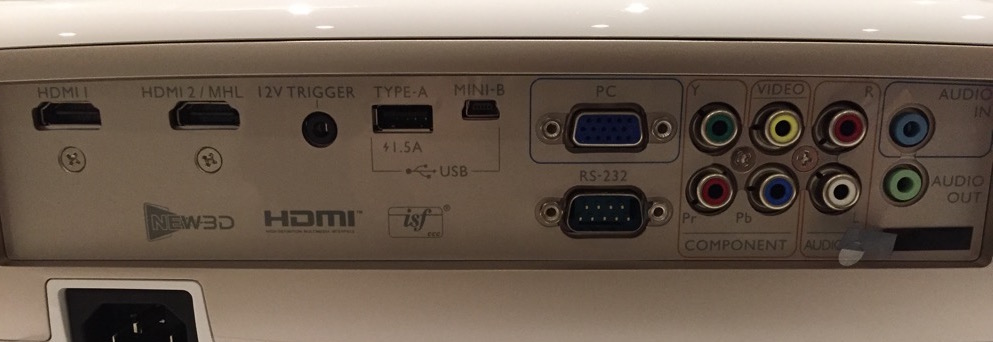
If you’re like me you’re going to run a single HDMI up to your projector port and let an AV receiver, integrated amplifier, or other video switcher handle the rest. It’s great to have these ports if you really have need of them but I think that most people don’t.
This is a projector capable of producing an image with a brightness of 2000 ANSI lumens and at a contrast ratio of 15000:1. It claims to be able to produce colour to the Rec. 709 standard, which is the colour standard used to author Blu-ray movies and higher quality HDTV.
There are two 10w speakers integrated into the chassis, for a total of 20w of power.
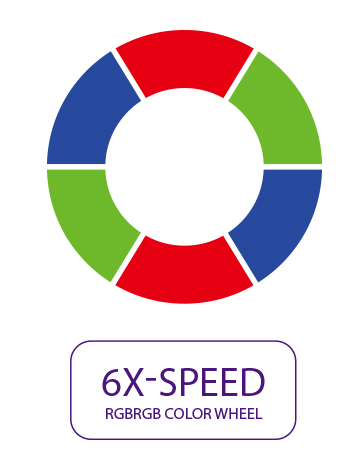 The Six-segment Colour Wheel
The Six-segment Colour Wheel
Okay, so let’s get back to the feature list. This is a DLP projector which stands for Digital Light Projection. It’s a technology that has been popularized for about a decade and a half, and it’s seen in some of the most expensive projectors on the market. It works by shining a light through a rotating colour wheel, making up a colour image on the screen.
The BenQ HT3050’s colour wheel is unique. Usually made up of three segments: red, green, and blue, colour wheels have been known to cause a “rainbow” effect for scenes with varied and dynamic colours. The idea here is that BenQ has doubled up each colour, going from an RGB colour wheel to an RGBRGB colour wheel. In theory this should help with the rainbow effect. Does it? Read on, I’ll get to it.
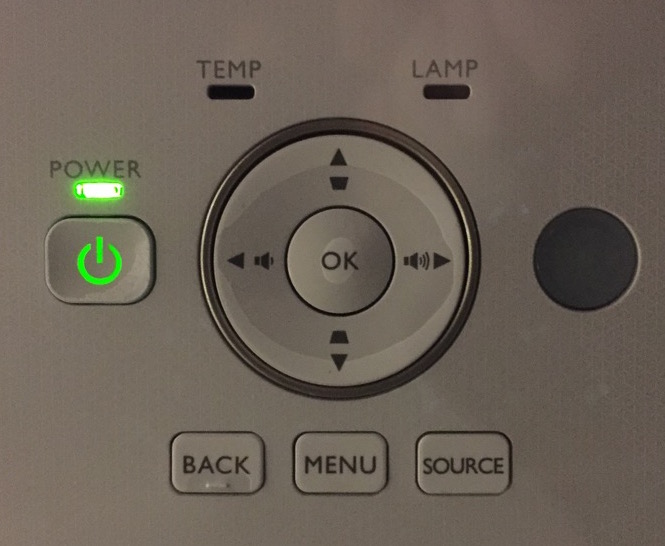 Using the HT3050
Using the HT3050
I installed the HT3050 in a professional calibre cinema in Yaletown; the screen is a high-contrast Draper model built to handle the small amount of ambient light that is present in the space. The projector was both suspended from a ceiling mount and used off-axis to test keystoning. I tested both with the integrated speakers and again hooked up to the Dolby Atmos sound system in the space.
The testing material used was the first two chapters of Christopher Nolan’s The Dark Knight. This material was chosen for two reasons: it features both full-frame 1920×1080 content (originally filmed in IMAX) in the opening scene, as well as letterboxed widescreen content in the second scene. It features a wide range of audio dynamics, and a varied level of bright and dark moments throughout the first two scenes, pushing contrast ratio and colour capabilities.
The screen used was 120” on diagonal, and the projector was approximately 15’ back from the projection surface, hanging roughly 36” from an 11’ ceiling. Keystoning was tested at the recommended 28º angle
Picture
The picture quality of the HT3050 is excellent for the price. The contrast and colour are some of the best in class in the price range of this unit. Tested against 3-chip LED projectors from a competitor, it was evident that the out-of-the-box performance of the HT3050 is going to be “good enough” for a lot of viewers out there. Calibrating the projector led to a higher level of fidelity. I believe the claim that this is Rec. 709 compliant; the bright blue and gold of the Warner Brothers logo really popped, the contrast between Batman and the white van in scene two was easy to see; the definition of Batman’s suit and the lines on the van were clear.
In the sake of full transparency: this is an excellent projector for the price, but colour and contrast are both not at peak levels; projectors in the consumer space go up to $10,000 (moving into prosumer and professional beyond that) and performance increases accordingly.
Note: you may be asking “why are there no pictures of the projector in action?”. Because of the nature of how projection works, it doesn’t photograph well. I don’t want to give a poor example of what this projector can do by putting a picture up here and thus those non-representative photos do not appear in this article.
I was particularly impressed with the HT3050’s ability to keystone at a sharp 28º angle. The image appeared to be relatively distortion-free, and keystoned without much difficulty.
Audio
The speakers in the HT3050 should only be used in the most dire of circumstances. Like every other projector on the market, 10W per channel is barely enough to drown out the fan noise on this unit, let alone produce a convincing home theatre experience.
Purchase a home theatre in a box, pick up a Sonos kit, build your own surround system from components; do something other than use the speakers on this unit.
My only serious feedback about this device is that the fan is loud; this is a common issue with projectors of this size. Because the body is kept so small, fans and active cooling are needed, and the fans need to be small. Small fans rotating quickly produce a high pitched buzz which can be quite distracting in quieter moments if you’re using the integrated speakers. If you have a home theatre audio system you’ll most likely have a centre channel capable of speaking over the fan noise, making it less of an issue.
Final Points
Buying a projector is only part of the home theatre equation. You need a good, high contrast screen (either dark for areas with ambient light or white for darker rooms). You need a good ceiling mount (in my opinion). You need a long HDMI cable to connect it up to your home theatre receiver and component speakers. And you should probably get Geek Squad to set it up and calibrate it.
But the projector IS an important part, and if the BenQ HT3050 high definition home theatre projector is around what you want to spend, it’s an excellent choice to build your theatre around.



































